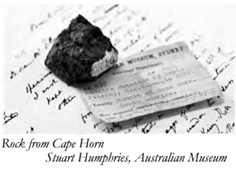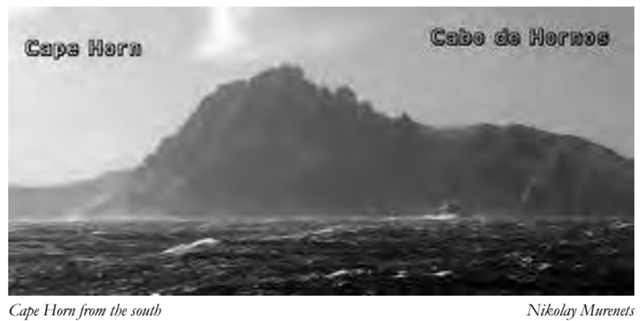- Author
- A.N. Other
- Subjects
- Biographies and personal histories, Ship histories and stories, History - pre-Federation
- Tags
-
- RAN Ships
- None noted.
- Publication
- March 2012 edition of the Naval Historical Review (all rights reserved)
We recently received a visit from one of our overseas members David Lort-Phillips from Pembrokeshire in Wales. As one of David’s relatives John Lort Stokes was one time captain of HMS Beagle he has developed a long-time interest in the HMS Beagle Project which aims to retrace the voyages of discovery and bring to life a new wave of adventure in scientific research. In doing a little detective work we were able to present David with a unique set of photographs from the Australian Museum of possible interest to his project.
HMS Beagle was one of a large number of Cherokee class 10-gun brigs built for the Royal Navy. These were small ships 90 ft (27.5 m) long with a 25 ft (7.5 m) beam and a draught of 13 ft (3.8 m). She was of 240 tons burden and had a complement of 75 including supernumeraries. By comparison Cook’s Endeavour was 368 tons burden. She was launched at Woolwich Dockyard on the Thames on 11 May 1820. She was initially laid up until converted to surveying duties. She must have been well built as she was involved in three lengthy voyages of discovery and was to last a total of 50 years until broken up in 1870.
On her first voyage to undertake hydrographic surveys of Patagonia and Tierra del Fuego she was under the command of Commander Pringle Stokes, RN. The overall command of the expedition was given to Captain Phillip Parker King, RN sailing in the larger HMS Adventure. Parker King was the eldest son of the third governor of New South Wales, he was born at Norfolk Island and became the first native born Australian to reach flag rank. The ships set out from Plymouth on 26 May 1826. In unusual circumstances, even for those times, Captain King took his eight year old son Philip with him onboard Adventure. Another youngster John Lort Stokes was a midshipman in Beagle. Faced with appalling conditions, in desolate waters, four offices and seven men lost their lives including Commander Stokes who fell into deep depression and took his own life with his remains lying buried at San Juan near the shores of the Magellan Strait. Command of Beagle was then given to the lively aristocratic Lieutenant Robert Fitzroy; later to become a Vice Admiral and Governor of New Zealand with his half-brother Sir Charles Fitzroy becoming Governor of New South Wales. Towards the end of this voyage on 20 April 1830 Fitzroy and a party from Beagle landed on the island of Cape Horn and climbed to the summit where they hoisted the Union Jack and drank the health of King George IV. They also took with them a collection of rock fragments from the summit. Beagle returned safely to England in October 1830.


After refitting, Beagle departed Plymouth on 10 December 1831, on her most famous second voyage under the command of now Commander Robert Fitzroy. John Lort Stokes had now been advanced to Mate and Assistant Surveyor and young Philip Gidley King to Midshipman. Included in the company was a young gentleman naturalist, who had been destined for the church, Charles Darwin, who was a self-financing passenger. A lifelong friendship was established between these young men. Extensive surveys were conducted in South America, where the celebrated artist Conrad Martens was to join the expedition. The ship returned via the Bay of Islands and called at Sydney, where Darwin was hosted at the home of Captain Phillip Parker King and continued to ride over the Blue Mountains to Bathurst for further observations of local fauna and flora. Beagle returned to Falmouth in October 1836 after nearly five years in which Charles Darwin had amassed sufficient scientific information for the basis of what was to become his seminal work and world famous ‘Origin of the Species by Natural Selection’.
In only six months Beagle was at sea again in 1837 this time to survey large parts of the unexplored Australian coast line. She was under the command of Commander John Wickham, RN with now Lieutenant John Lort Stokes as First Lieutenant. In March 1841 Wickham fell ill and was forced to resign leaving Lort Stokes in command. During this voyage Port Darwin was named in honour of their former shipmate. The third final voyage of discovery by this gallant little ship was completed in 1843.




